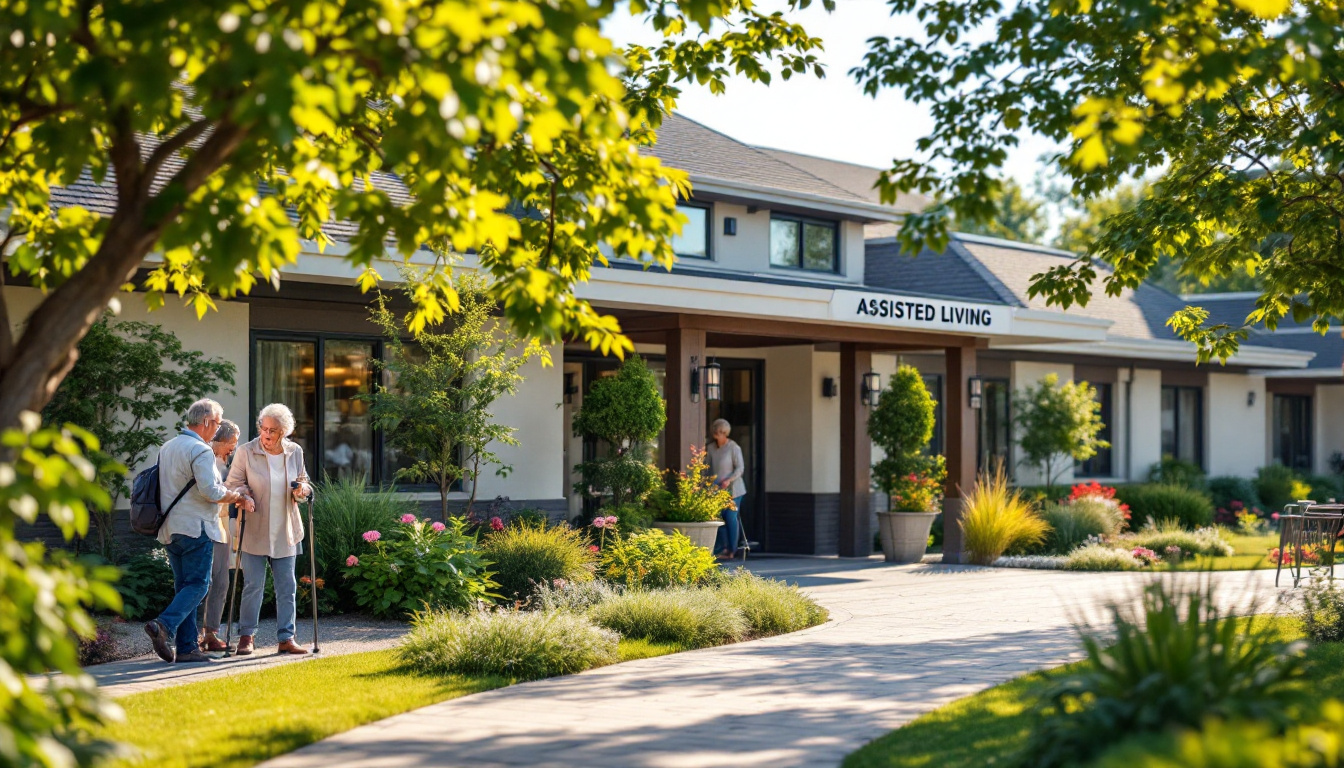The Importance of Reliable Transportation for Seniors’ Healthcare Needs
Ensuring Access and Independence in Aging Populations

The Critical Role of Transportation in Senior Well-Being
Reliable transportation is a cornerstone of healthy aging, profoundly impacting seniors' healthcare access, safety, and overall quality of life. As many older adults face mobility challenges, limited transportation options can lead to missed medical appointments, social isolation, and increased health risks. This article explores how various transportation services support seniors’ independence, enhance health outcomes, and foster community engagement, particularly addressing the unique hurdles faced by rural and underserved populations.
The Vital Connection Between Transportation and Healthcare Access

What is the importance of reliable transportation for seniors' healthcare access and outcomes?
Reliable transportation plays a critical role in ensuring that older adults can access the medical care they need. Without dependable options, many seniors miss appointments, which can lead to gaps in preventive care and delay the management of chronic conditions. Successfully attending medical visits allows for early detection of health issues, timely treatment adjustments, and ongoing health monitoring.
Transportation options such as paratransit services, ride-sharing platforms like Lyft and Uber, community shuttles, and subsidized public transit are designed to meet the mobility needs of seniors, including those with disabilities or frailty. These services help reduce the physical and logistical barriers that often prevent older adults from reaching healthcare facilities.
Furthermore, reliable transportation supports mental health and social well-being by enabling seniors to stay connected with healthcare providers, family, and friends. This ongoing engagement fosters a sense of independence and helps prevent social isolation, which is linked to depression and cognitive decline.
In rural areas, transportation becomes even more crucial as distances to healthcare providers are often longer and fewer options exist. Federal programs like Medicaid and the Federal Transit Administration's Section 5310 support transportation services that cater specifically to the needs of rural seniors, facilitating access to necessary health services.
Ultimately, addressing transportation barriers isn't just about convenience—it directly influences health outcomes, reduces emergency hospitalizations, and promotes a higher quality of life for seniors. Ensuring consistent, accessible, and affordable transportation options is fundamental to supporting healthy aging and community integration.
Breaking Barriers: Transportation Challenges in Rural and Urban Settings

Limited routes and infrastructure in rural areas
Rural communities often face fewer public transportation routes and limited infrastructure, making it difficult for seniors to access essential services. Unlike urban areas, where bus and transit options are more prevalent, rural regions may lack comprehensive public transit systems altogether. This isolation can hinder seniors from attending medical appointments, grocery shopping, or participating in social activities.
High fares and transportation costs
Transportation expenses can be a significant barrier for older adults, especially those on limited incomes. High fares for public transit, ride-sharing, and specialized services can add up quickly, discouraging usage. For many seniors, these costs make it difficult to afford consistent transportation, impacting their ability to maintain health and independence.
Difficulty understanding rideshare technology
Ride-hailing services like Uber and Lyft offer convenient options, but they can be challenging for seniors unfamiliar with smartphone technology or digital applications. Difficulties in navigating apps, setting up accounts, or understanding how to request rides often prevent some from utilizing these services, limiting their mobility options.
Long travel distances and delays for healthcare
In rural areas, seniors often travel much farther—averaging 17.8 miles than urban residents' 8.1 miles—to access healthcare. These long distances, combined with longer travel times and fewer transportation options, can lead to delays or missed medical appointments, risking conditions worsening or untreated.
| Challenge | Description | Potential Solutions | Additional Details |
|---|---|---|---|
| Limited routes | Few available public transit options | Expand community-based rides like dial-a-ride, support volunteer driver programs | Federal programs like Section 5310 help fund these efforts |
| High fares | Elevated costs discourage use | Subsidies, Medicaid-covered transportation | Cost-effective and promotes health equity |
| Ride-share difficulties | Limited tech skills hinder app use | Training, simplified booking systems, alternative call-in options | Keep tech accessible and senior-friendly |
| Long travel distances | Extended travel for healthcare | Mobile clinics, telehealth, partnerships with local providers | Reduce travel burden and improve timely care |
Addressing these challenges requires collaboration between policymakers, community organizations, and transportation providers. Innovations such as autonomous vehicles, senior-friendly ride-hailing apps, and telemedicine are emerging solutions to enhance accessibility.
Understanding and overcoming transportation barriers is critical to ensuring that seniors, especially in underserved rural areas, can maintain their health, independence, and social connectedness. Continued investment and tailored programs are essential for creating equitable transportation options for all older adults.
Enhancing Safety and Independence Through Specialized Transportation

Features of specialized transit services (wheelchair access, assistance)
Specialized transportation services for seniors emphasize safety, convenience, and tailored support. These services often include wheelchair accessibility, allowing seniors who use mobility aids such as walkers, canes, or wheelchairs to travel comfortably and safely. Vehicles are equipped with features like low floors, ramps, lifts, and securement systems to accommodate various mobility devices.
Additionally, transportation providers may offer assistance with boarding, disembarking, and handling medical equipment like oxygen tanks or walking aids. This ensures that seniors experience smooth, safe transfers without physical strain or the risk of injury.
Such tailored services help meet the unique health and mobility needs of each individual, fostering greater independence and confidence in traveling.
Trained drivers and safety protocols
To maximize safety, drivers of senior transportation services typically undergo specialized training focused on interacting with elderly passengers. This training may include techniques for assisting with mobility, recognizing signs of medical distress, and providing courteous, patient support.
Safety protocols often involve vehicle features like seat belts designed for seniors, securement of mobility devices, and regular vehicle maintenance to prevent breakdowns. Some services also use GPS tracking and real-time scheduling apps to enhance reliability and respond quickly to any emergencies.
By emphasizing safety through driver training and vehicle features, specialized transit services reduce risks during rides and create a secure environment for older adults.
Promoting independence for mobility-impaired seniors
Reliable and accessible transportation empowers seniors with mobility challenges to maintain their independence. With safe, tailored transit options, they can attend medical appointments on time, shop for groceries, fulfill household errands, and participate in social activities.
Services like door-to-door or curb-to-curb pickups make traveling easier and more comfortable. Many programs also include assistance from friendly, trained drivers, further reducing physical and psychological barriers.
Supporting autonomy through dependable transportation not only contributes to seniors’ physical well-being but also enhances their emotional health by reducing feelings of isolation and dependence on family members or caregivers. Ultimately, these services help seniors live dignified, active lives within their communities.
Transportation as a Social Connector and Community Builder
 Transport options play a vital role in fostering social engagement and strengthening community bonds among older adults. When seniors have reliable means to access community activities, social events, and recreational programs, they experience a greater sense of belonging and purpose. These opportunities are essential for maintaining mental health, reducing feelings of loneliness and depression, and encouraging active lifestyles.
Transport options play a vital role in fostering social engagement and strengthening community bonds among older adults. When seniors have reliable means to access community activities, social events, and recreational programs, they experience a greater sense of belonging and purpose. These opportunities are essential for maintaining mental health, reducing feelings of loneliness and depression, and encouraging active lifestyles.
Transportation services such as senior shuttles, volunteer-driver programs, and community transit are designed to facilitate participation in social life. They help seniors attend gatherings at local centers, religious services, or neighborhood events, which are crucial for emotional support and community connection.
Partnerships between public transit agencies, nonprofit organizations, and local governments are instrumental in improving service coverage, reliability, and inclusivity. These collaborations often lead to innovative solutions like mobile clinics, door-to-door services, and specialized transportation tailored for individuals with mobility aids or cognitive impairments. Such efforts ensure that all seniors, regardless of their physical or financial limitations, can stay active and engaged.
Why are transportation options crucial for enhancing the health, safety, and quality of life of older adults? They enable access to healthcare, preventing complications from missed appointments and chronic condition mismanagement. Moreover, transportation promotes social participation, which is linked to better mental and emotional well-being. By reducing barriers and creating inclusive, accessible services, communities can support older adults in living independently and with dignity, enriching the social fabric of the entire neighborhood.
Innovative Strategies and Federal Support to Improve Senior Transportation

What are the challenges and potential solutions for providing transportation to seniors in underserved or rural areas?
Transporting seniors in rural communities presents unique difficulties. These regions often lack extensive public transit systems, have limited infrastructure, and face funding shortages. As a result, many seniors struggle to access healthcare services, grocery stores, and social activities, which can lead to increased isolation and declining health.
To address these issues, expanding community-based transportation services such as dial-a-ride and volunteer driver programs is essential. These initiatives are often supported by federal programs like the Older Americans Act and the Federal Transit Administration’s Section 5310 Program, which fund vehicle provision and mobility management.
Emerging solutions include the use of autonomous vehicles tailored for seniors and user-friendly ride-hailing apps designed with accessibility features. Telehealth services also reduce the need for physical travel, connecting seniors directly with healthcare providers from home.
Collaborative efforts among policymakers, community organizations, and transportation providers are critical. Investments in infrastructure, targeted funding, and innovative technology can enhance transportation options, helping seniors in rural areas maintain their independence, access essential services, and enjoy a higher quality of life.
A Lifeline for Independent Living and Community Participation
Reliable transportation is more than just a means to get from point A to point B; it is an essential component of aging well. It ensures that seniors remain connected with healthcare providers, social networks, and community resources, promoting health, safety, and mental well-being. Addressing the challenges faced by rural and urban areas through innovative, well-funded programs and technology solutions is vital for equitable access. The collective effort of policymakers, service providers, and communities can create a transportation system that upholds seniors' dignity, independence, and quality of life—cornerstones of a compassionate, age-friendly society.
References
- How Can Older Adults Get Help with Using Transportation Services?
- The Benefits of Specialized Transportation for Seniors - Spedsta
- Older Adults & Transportation - NADTC
- Transportation to Support Rural Healthcare Overview
- Why Reliable Transportation Matters: Impact on Senior Well-being
- The Importance of Reliable Transportation - OATS Transit
- How Transportation Enhances Senior Independence
- The Importance of Transportation for Seniors to Medical Appointments






































































































